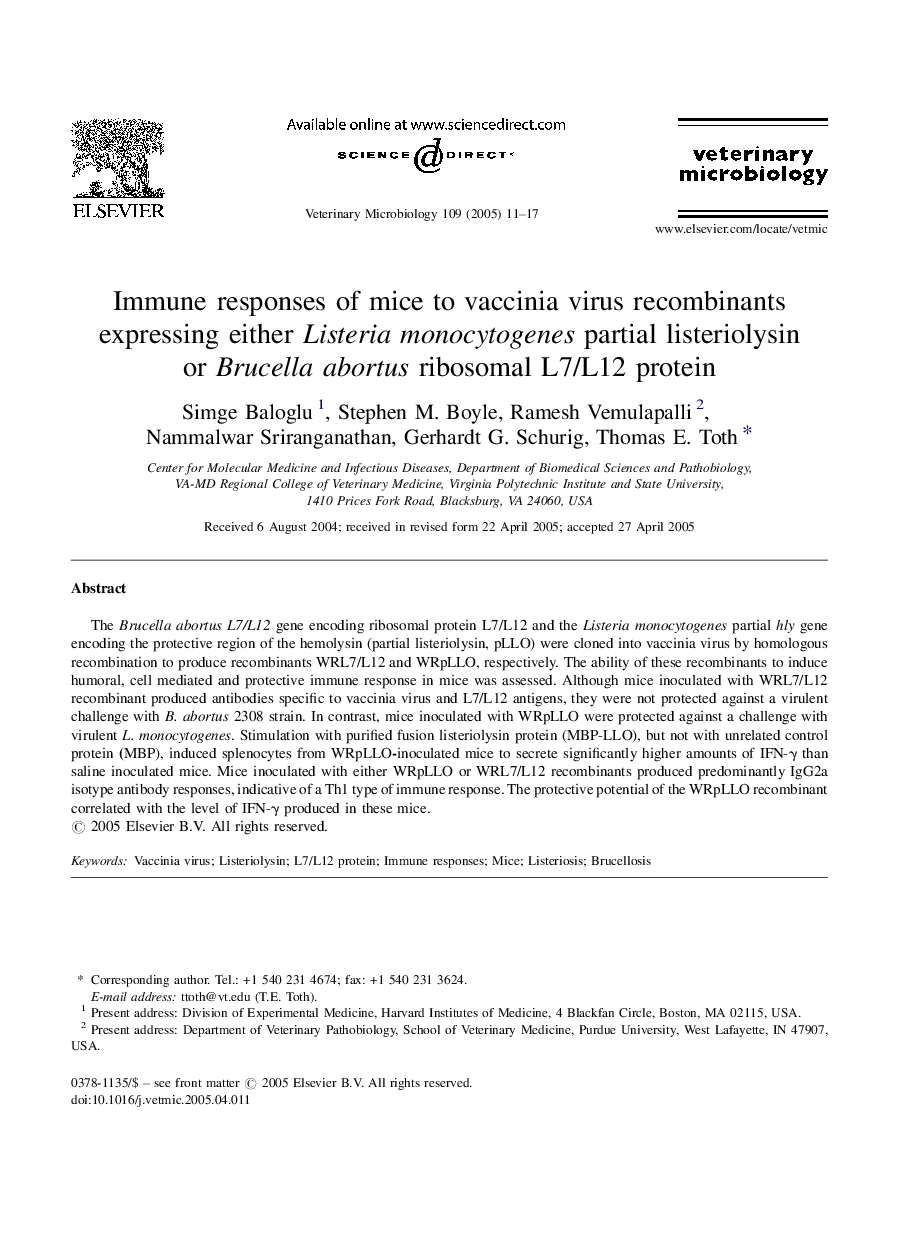| Article ID | Journal | Published Year | Pages | File Type |
|---|---|---|---|---|
| 8989519 | Veterinary Microbiology | 2005 | 7 Pages |
Abstract
The Brucella abortus L7/L12 gene encoding ribosomal protein L7/L12 and the Listeria monocytogenes partial hly gene encoding the protective region of the hemolysin (partial listeriolysin, pLLO) were cloned into vaccinia virus by homologous recombination to produce recombinants WRL7/L12 and WRpLLO, respectively. The ability of these recombinants to induce humoral, cell mediated and protective immune response in mice was assessed. Although mice inoculated with WRL7/L12 recombinant produced antibodies specific to vaccinia virus and L7/L12 antigens, they were not protected against a virulent challenge with B. abortus 2308 strain. In contrast, mice inoculated with WRpLLO were protected against a challenge with virulent L. monocytogenes. Stimulation with purified fusion listeriolysin protein (MBP-LLO), but not with unrelated control protein (MBP), induced splenocytes from WRpLLO-inoculated mice to secrete significantly higher amounts of IFN-γ than saline inoculated mice. Mice inoculated with either WRpLLO or WRL7/L12 recombinants produced predominantly IgG2a isotype antibody responses, indicative of a Th1 type of immune response. The protective potential of the WRpLLO recombinant correlated with the level of IFN-γ produced in these mice.
Related Topics
Life Sciences
Agricultural and Biological Sciences
Animal Science and Zoology
Authors
Simge Baloglu, Stephen M. Boyle, Ramesh Vemulapalli, Nammalwar Sriranganathan, Gerhardt G. Schurig, Thomas E. Toth,
